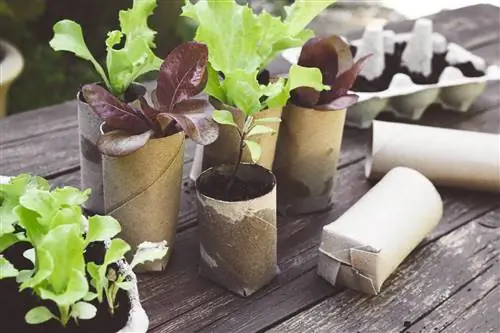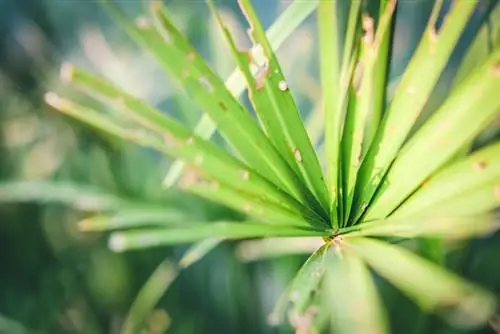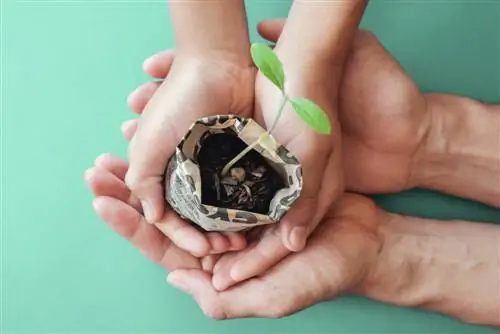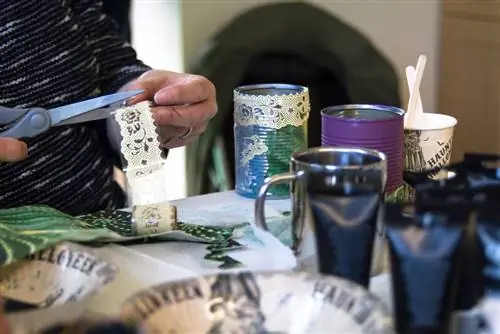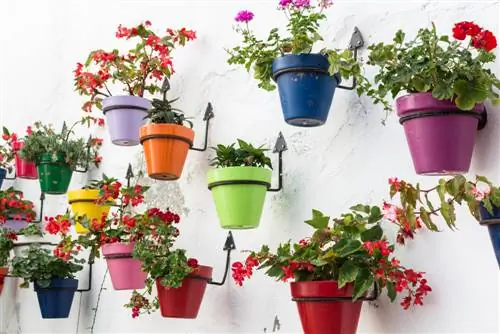- Author admin [email protected].
- Public 2023-12-16 16:46.
- Last modified 2025-01-23 11:22.
Environmental compatibility and cost savings, both of which can be achieved with nursery pots made of toilet paper. Because the small cardboard rolls are produced in large quantities one way or another. After a few simple steps they are ready for sowing. After they serve as containers, they simply decompose.
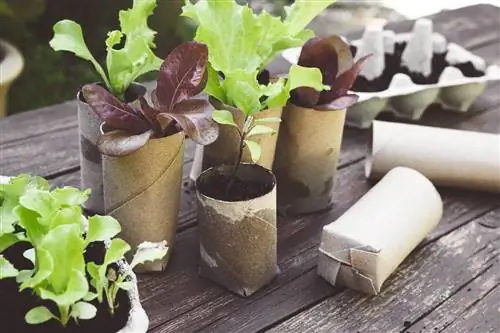
How can I use toilet paper rolls as nursery pots?
Cut the cardboard core into two rolls. Cut one end evenly four times 1.5 cm deep. Fold the tabs over to form a stable base. Fill the pots with potting soil and place them in a waterproof bowl.
Are toilet paper rolls suitable as nursery pots?
Toilet paper rolls are ideal as an alternative to conventional nursery pots. The cardboard core that is left over every time a toilet paper roll is used up is used for this purpose. It is made from sturdy cardboard that decomposes 100% naturally over time. Two small growing pots can be made from it without any additional material. You just have to start collecting rolls of paper in time to meet your growing pot needs in the spring. Alternatively, the cardboard cores from kitchen rolls can be used.
How do I make nursery pots out of toilet paper rolls?
Upcycling is very easy. This is how you can make the cultivation pots yourself:
- Cut the cardboard core in half with scissors to get two small cardboard rolls.
- Cut one end four times at even intervals and approx. 1.5 cm deep (two egg cuts opposite each other).
- Fold one flap at a time inward. For better stability, ensure a sharp folding edge.
- Push the last tab under the first tab so that the floor construction can no longer open. (similar to the cardboard box)
If you would like to have a higher growing pot, then simply use a whole toilet paper roll.
How are the pots used?
Fill the DIY growing pots withgrowing soilthen place themnext to each other in a bowl containing small water lets through. Place the tray on a warm and bright windowsill and sow the seeds. Keep the soil moist, but not too wet. A lid can ensure higher humidity, but must be ventilated daily. As soon as the plants are sufficiently large and the weather permits, they can be planted out.
What happens to the pots after planting?
The pots can be put in theorganic waste bin orin thecompost. If you only sow one seed per pot, you can even plant the plant with it. This has the advantage that the fine roots are not disturbed and remain intact. The cardboard will soften in the ground in time and decompose so that the roots of the young plant can spread unhindered.
Tip
Pay attention to moisture to avoid mold
It can occasionally happen that mold forms on the outside of the cultivation pots, which is usually due to excessive moisture. Do not keep the soil too moist and ventilate covers regularly. Spray pots and soil with horsetail tea, which reliably and, above all, naturally drives away mold.

